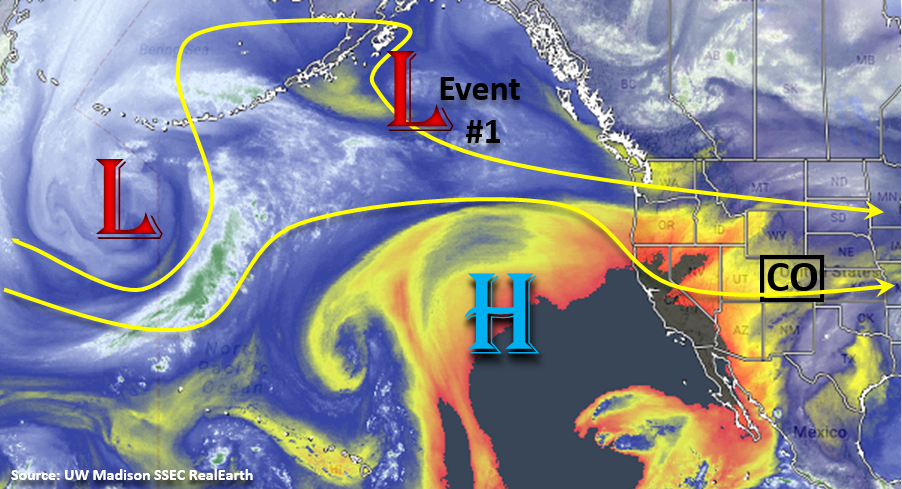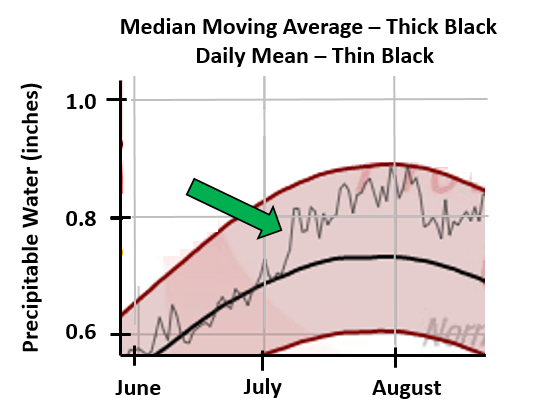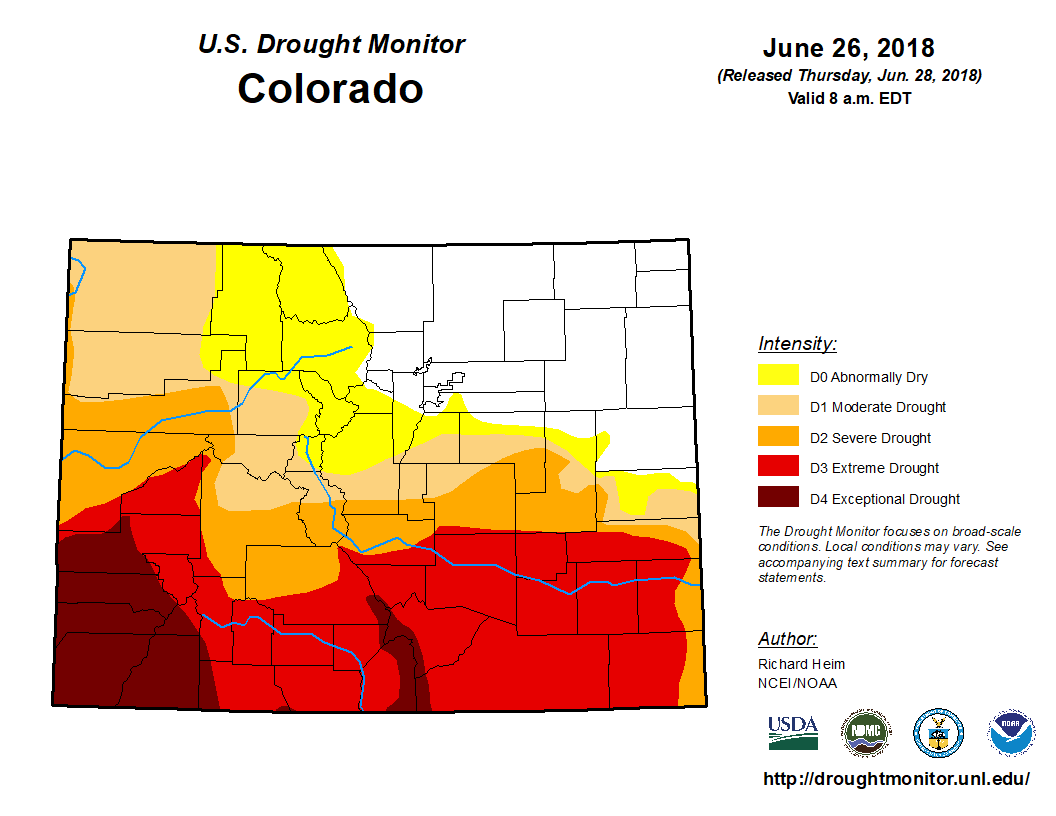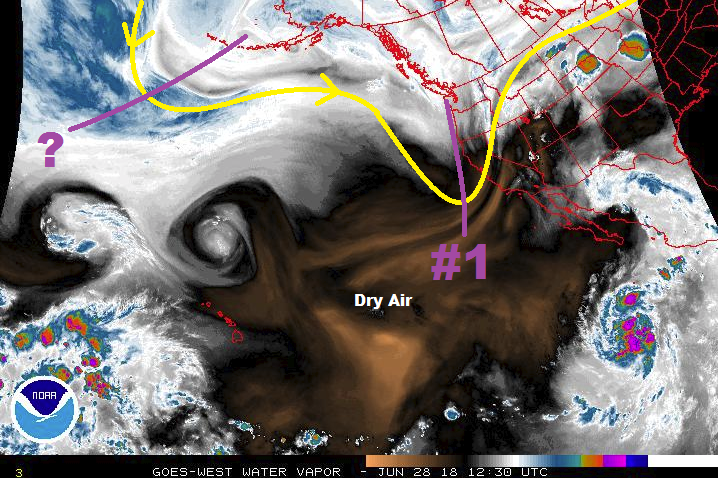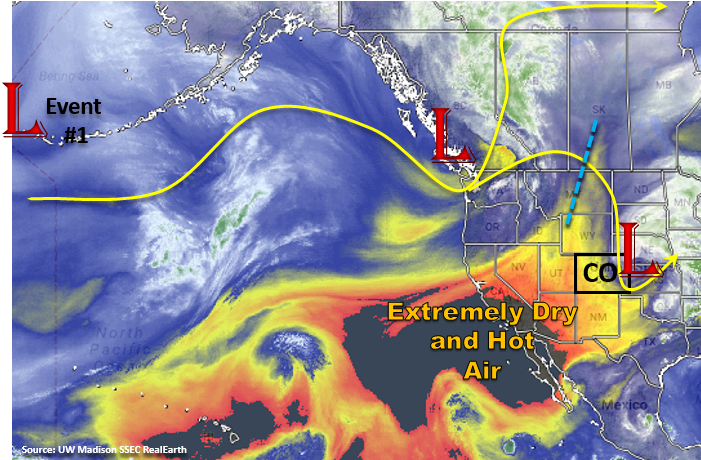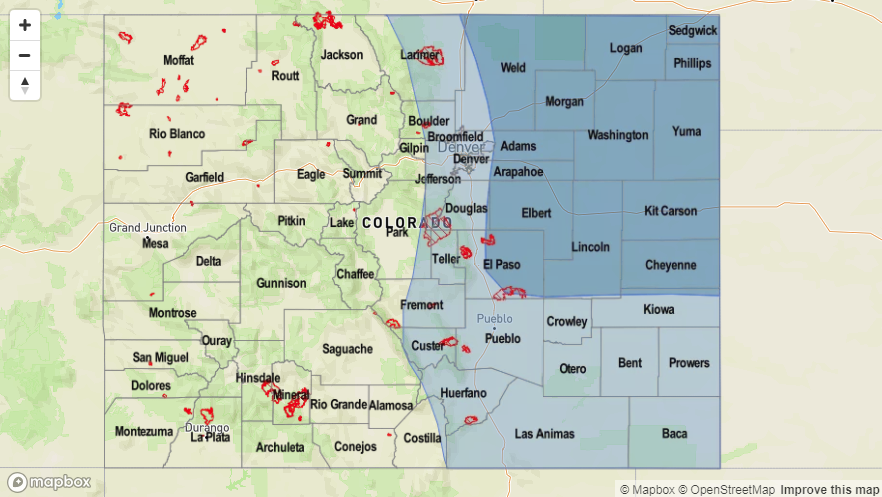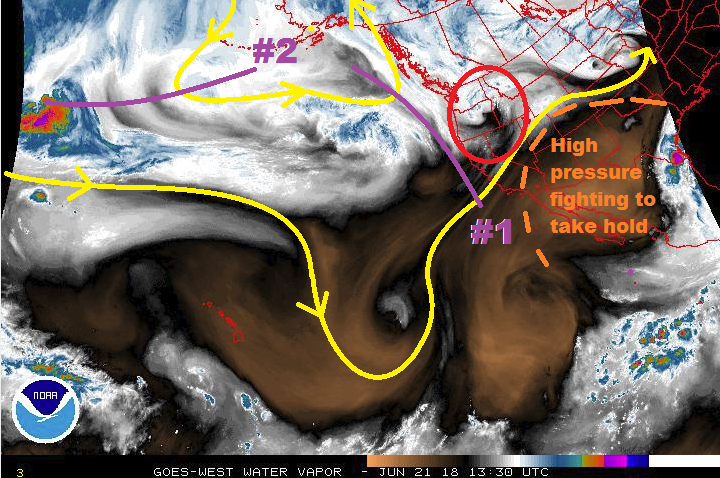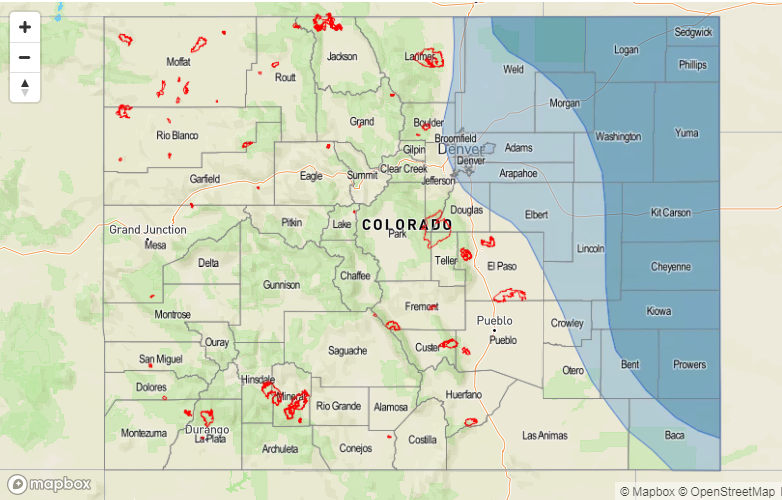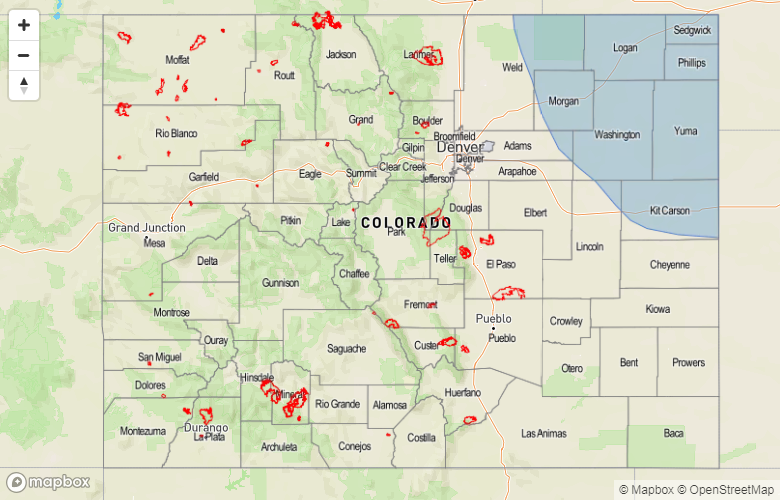Issue Date: Monday, July 2nd, 2018
Issue Time: 2:30PM MDT
Valid Dates: 7/3– 7/17
On and off thunderstorm activity will mark this next FTO period while Colorado remains under a ridging pattern. This strong ridge will keep the jet stream and upper level disturbances well to the north of Colorado, which will limit shower and thunderstorm activity to the afternoons and evenings. As these upper systems move north of Colorado, they will drop a couple of cold fronts, which will help moisten the lower atmosphere for afternoon showers and thunderstorms. Depending on the placement of the ridge axis, Colorado’s chances for afternoon rainfall either increases or decreases. The placement of the ridge determines where the moisture can return for the terrain induced showers and thunderstorms. Thus, the on and off nature of the thunderstorm threat as the ridge axis shifts throughout the week. There is only one event for this FTO forecast period due to high uncertainty in regards to moisture return after this weekend.
The beginning of July is marked by a strong increase in the daily mean Precipitable Water (PW) climatology. This sharp jump is marked in the Denver sounding climatology with the green arrow below (source: SPC). The median moving average goes from about 0.7 inches to just over 0.8 inches in about a week’s time and can also be seen in Grand Junction’s climatology. This sudden shift is important to note as it marks the beginning of increased moisture seen during the monsoon season. When this higher moisture is present, the chances for heavy rainfall and flooding increases as rainfall rates become more efficient. Slow steering winds under the monsoon regime (ridging pattern) also increase the chances for flooding as more rainfall can fall over one area. Thus, beginning after July, extra attention is paid to a model’s PW values and upper disturbances in the water vapor imagery as they often mark when there is an increased flood threat. It’s still a bit early for monsoonal flow to reach Colorado, but model forecasts and wind shifts will be monitored closely for trends during each long-range forecast.
PW values east of the Continental Divide show a bit more moisture on Wednesday through Friday before it begins to taper off a bit as the ridge shifts east. Wednesday, a cold front will slide through the northern portion of the state, which will allow for better low-level moisture for thunderstorms as they form with upslope flow during the afternoon. Between the boundary, high CAPE and decent shear, some severe thunderstorms are possible over the eastern plains during the late afternoon and evening. Residual moisture and strong southerly flow pulling in Gulf of Mexico moisture over the eastern plains will keep the area under an elevated flood threat through Friday night. Sunday morning, another cold front is forecast to pass over the northern portion of the state, which would increase the chances for showers and thunderstorms over the Front Range and Urban Corridor. At this time the atmosphere appears to remain capped over the eastern plains.
In Western Colorado, moisture begins to creep up from the subtropics throughout the week as the ridge axis shifts from west to east. Models hint at some subtropical moisture reaching the southwest corner of the state Friday and continuing to increase throughout the weekend. While the highest PW values will likely remain west of Colorado, PW values in the 0.8 inch range would bring measurable rainfall to the San Juan Mountains. If this moisture is realized, rain rates greater than 0.25 inches/hour are possible, which could bring mud flows, debris slides and flash flooding to the burn scars in the southwest mountains. At this time, uncertainty is high, so please check back to the FTO on Thursday afternoon for an update.
Below we describe the one identified precipitation event of this FTO in more detail.
Event #1: Wednesday (7/4) – Monday (7/9)
Elevated/No Apparent Threat for daily, terrain induced thunderstorms under the ridging pattern.
As mentioned above, the best chance for heavy rainfall east of the Divide will occur from Wednesday to Friday night. With the ridge axis a bit to the west of Colorado, southerly flow will pull in high moisture from the Gulf of Mexico to the eastern plains. Wednesday, the passage of a cold front will help increase low-level moisture over the northeast corner of the state and will increase the chances for heavier rainfall along the Front Range and Urban Corridor. This will also be the day where severe weather chances will be greatest over the eastern plains. The main threats will be severe hail and strong winds, with increased convergence along the stalled out front over the Palmer Divide. Front Range rainfall chances increase again on Sunday as another cold front moves through northern Colorado. All afternoon convection is expected to be terrain driven during this period, so there are no overnight threats at this time.
West of the Divide, subtropical moisture slowly increases throughout the week as the ridge axis shifts eastward. Right now it looks like the ridge does not migrate northward enough to mark the beginning of 2018 monsoonal flow. There is also not a lot of confidence as to how high the PW values will reach over the southwest corner of the state or where the moisture axis will set up. However, if PW values are able to increase to 0.8 inches, as indicated by the GEFS, rain rates greater than 0.25/hour would be possible. This would bring measurable rainfall to the San Juan Mountains and fires, but may also cause mud flows, debris slides and flash flooding over the burn scars. As mentioned, confidence is low so there is No Apparent Threat at this time. Please check back to Thursday’s FTO for more details.

